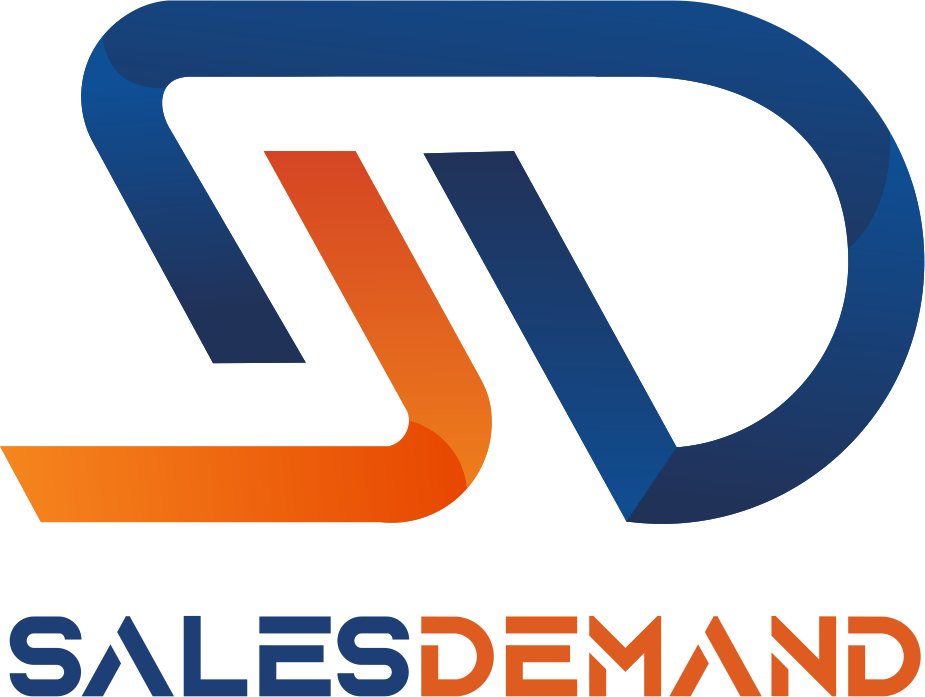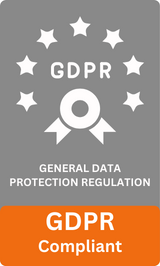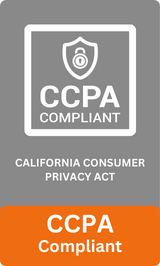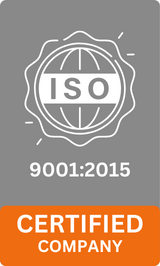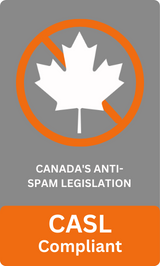
Quality is never an accident; it is always the result of intelligent effort
– John Ruskin
In the B2B industry, the quality of leads is paramount to achieving business success. As we approach 2025, human verification has emerged as a crucial strategy in enhancing lead quality, ensuring that businesses not only generate leads but also convert them into loyal customers. This comprehensive exploration delves into the significance of lead quality, the transformative role of human verification, and the future trends shaping B2B success.
What is Lead Quality
Lead quality refers to the likelihood that a lead will convert into a paying customer. It is assessed based on factors like:
- Fit: Does the lead align with your ideal customer profile?
- Intent: Is the lead genuinely interested in your offerings?
- Engagement: Has the lead interacted meaningfully with your business?
Importance of Lead Quality in B2B Marketing
- Maximized ROI: High-quality leads generate better returns on marketing and sales investments by focusing on prospects with genuine potential.
- Shortened Sales Cycles: When sales teams engage with well-qualified leads, the time to conversion significantly decreases.
- Improved Team Efficiency: Teams spend less time chasing unqualified prospects, optimizing their efforts on viable leads.
Challenges in Achieving High-Quality Leads
Despite its importance, achieving high lead quality is fraught with challenges:
- Data Decay: Information about leads often becomes outdated, reducing its reliability.
- Volume vs. Quality: A flood of leads can overwhelm systems, making it hard to separate the wheat from the chaff.
- Automation Pitfalls: While automation speeds up lead generation, it can misinterpret nuanced customer behaviors.
The Role of Human Verification in Modern B2B Practices
What is Human Verification?
Human verification involves manually validating lead information to ensure its accuracy and relevance. Unlike automated systems, human verification adds a layer of scrutiny, identifying nuances and contextual details that machines might overlook.
Advantages Over Automated Tools
While automation offers scalability, it often lacks the precision required for high-quality lead generation. Human verification addresses this gap by:
- Enhancing Data Accuracy: Manual checks ensure that contact information is current and correct, reducing the chances of bounced emails or failed communications.
- Identifying Intent: Human verifiers can assess the genuine interest of leads, distinguishing between casual inquiries and serious prospects.
- Compliance Assurance: Manual verification ensures adherence to data privacy regulations, mitigating legal risks associated with data handling.
How Poor Lead Quality Impacts B2B Success
1# Lost Revenue Opportunities
Engaging with low-quality leads diverts resources away from genuine prospects, leading to missed sales opportunities. Businesses that focus on lead quality experience a 133% increase in revenue compared to those that don’t prioritize it.
2# Extended Sales Cycles
Low-quality leads often result in prolonged sales cycles, as sales teams spend more time nurturing uninterested or unqualified prospects. This inefficiency hampers overall productivity and delays revenue generation.
3# Brand Reputation Risks
Repeated outreach to unqualified leads can tarnish a company’s reputation, leading to perceptions of spammy or intrusive marketing practices. Maintaining lead quality helps preserve brand integrity and fosters trust with potential customers.
Key Metrics to Measure Lead Quality
1# Lead Scoring Systems
Implementing a lead scoring system allows businesses to assign values to leads based on predefined criteria, such as engagement level, demographic fit, and behavioral indicators. This systematic approach aids in prioritizing leads that are more likely to convert.
2# Behavioral Indicators
Monitoring actions such as website visits, content downloads, and email interactions provides insights into a lead’s interest and readiness to engage. High engagement levels often correlate with higher lead quality.
3# Data Accuracy
Maintaining up-to-date and accurate lead information is crucial. Inaccurate data can lead to misinformed strategies and wasted resources. Regular data cleansing and verification are essential practices in this regard.
Human Verification vs. AI in Lead Generation
Strengths and Limitations of AI
Strengths:
- Processes large datasets quickly.
- Identifies patterns across vast volumes of data.
Limitations:
- Lacks the ability to interpret context or intent.
- Susceptible to errors when dealing with incomplete or ambiguous data.
Complementary Roles
Combining AI with human verification leverages the strengths of both approaches. AI can handle large volumes of data efficiently, while human verification adds depth and accuracy, ensuring that only the most promising leads proceed through the sales funnel.
Case Studies
- Case Study 1: A SaaS firm reduced bounce rates by 40% by combining AI-based pre-screening with human validation.
- Case Study 2: A financial services company improved conversion rates by integrating human oversight into its AI-driven lead-scoring system.
Tools and Platforms Supporting Human Verification
1# Selecting the Right Tools
Choosing appropriate tools is vital for integrating human verification into lead generation strategies. Factors to consider include:
- Integration Capabilities: Ensure compatibility with existing Customer Relationship Management (CRM) systems.
- User-Friendliness: Opt for platforms that are intuitive and facilitate seamless verification processes.
- Scalability: Select tools that can accommodate business growth and increasing data volumes.
2# Popular Platforms in 2025
As of 2025, several platforms have gained prominence for supporting human verification in lead generation. These include:
- Salesforce Verification Suite: Offers robust CRM integration and customizable workflows.
- HubSpot Enhanced Validation: Provides detailed insights into lead behavior.
- Marketo Lead Verifier: A top choice for marketing automation users.
Integration with CRM Systems
Seamless integration of verification tools with CRM systems streamlines workflows, enabling efficient lead tracking and management. This integration ensures that verified data is readily accessible to sales and marketing teams, enhancing productivity and effectiveness.
Industries Benefiting from Human-Verified Leads
1# Technology and SaaS
In the competitive tech and Software as a Service (SaaS) sectors, human-verified leads ensure that sales teams engage with prospects who have a genuine interest and the requisite authority to make purchasing decisions.
2# Financial Services
Accuracy and compliance are paramount in financial services. Human verification helps maintain data integrity, ensuring that outreach efforts meet regulatory standards and target appropriate audiences.
3# Healthcare and Life Sciences
In these highly regulated industries, human verification ensures that leads are not only accurate but also compliant with stringent data protection laws, facilitating effective and lawful marketing practices.
Strategies for Incorporating Human Verification in B2B Campaigns
Multi-Tier Verification Processes
Implementing a multi-tier verification process involves several layers of checks, enhancing lead quality. This approach may include initial AI screening followed by human verification to ensure accuracy and relevance.
Integration at Every Stage
Incorporating human verification at various stages of the lead nurturing process—from initial contact to final conversion—ensures consistent quality and increases the likelihood of successful outcomes.
Companies that have adopted human verification strategies report significant improvements in lead conversion rates and overall ROI. For example, businesses that utilize human-verified data have experienced a 451% increase in leads meeting qualification standards.
Challenges of Scaling Human Verification Processes
1# Cost Implications
While human verification enhances lead quality, it can be resource-intensive. Balancing the costs with the benefits is crucial for sustainable implementation.
2# Managing Large Data Volumes
As businesses grow, the volume of leads increases, posing challenges in maintaining verification standards. Investing in scalable human verification teams and integrating technology can help manage larger datasets without sacrificing quality.
3# Balancing Speed and Accuracy
Ensuring prompt verification without compromising accuracy requires efficient processes and well-trained personnel. Developing specialized training programs for data verification professionals can minimize human error and enhance consistency.
Data Privacy and Ethical Considerations in Lead Verification
1# Compliance with Regulations
Adhering to data protection laws, such as the General Data Protection Regulation (GDPR) and the California Consumer Privacy Act (CCPA), is critical in lead verification. Human verification helps ensure compliance by scrutinizing how data is collected, processed, and stored. Verification teams can identify and remove non-compliant leads, reducing the risk of fines and legal challenges.
2# Ethical Approaches to Lead Verification
Ethics in lead verification extend beyond legal compliance. Transparent practices, such as informing individuals about how their data will be used, build trust and foster positive relationships. Ethical practices also mitigate reputational risks and enhance customer satisfaction.
3# Transparency in Verification Processes
Maintaining transparency in how leads are verified reassures potential customers that their data is handled responsibly. Businesses can achieve this by openly communicating their verification practices in privacy policies and customer communications.
Trends Shaping Lead Quality and Verification in 2025
1# Hybrid AI-Human Systems
The future of lead verification lies in the integration of AI and human capabilities. Hybrid systems leverage AI for speed and scale while relying on human intuition for nuanced decision-making. This combination improves efficiency without sacrificing lead quality.
2# Predictive Analytics in Verification
Predictive analytics enables businesses to anticipate lead behavior based on historical data and patterns. By integrating predictive models with human verification, companies can focus on leads with the highest probability of conversion.
3# Blockchain for Transparent Verification Processes
Blockchain technology is gaining traction as a tool for maintaining transparent and tamper-proof records of lead verification processes. This innovation ensures accountability and builds trust in lead management systems.
The Future of Human Verification in B2B Success
Anticipated Advancements
The future of human verification will likely include more sophisticated tools and methodologies that blend seamlessly with emerging technologies. Automation of repetitive tasks and the development of more intuitive verification platforms will streamline processes.
The Role of Human Intuition and Empathy
Despite technological advancements, human intuition and empathy will remain irreplaceable in lead verification. Human reviewers can assess context, tone, and intent—factors that are challenging for machines to interpret accurately.
Predictions for 2030 and Beyond
As the B2B landscape continues to evolve, businesses will increasingly adopt human verification as a standard practice. By 2030, we can expect the widespread use of hybrid verification systems that enhance lead quality and streamline marketing efforts.
Conclusion
As B2B marketing evolves, lead quality remains a cornerstone of success. Human verification adds a critical layer of precision and trust, ensuring that businesses focus on leads with genuine potential. By embracing human verification alongside advanced tools, companies can redefine their approach to lead generation and achieve remarkable growth in 2025 and beyond.
